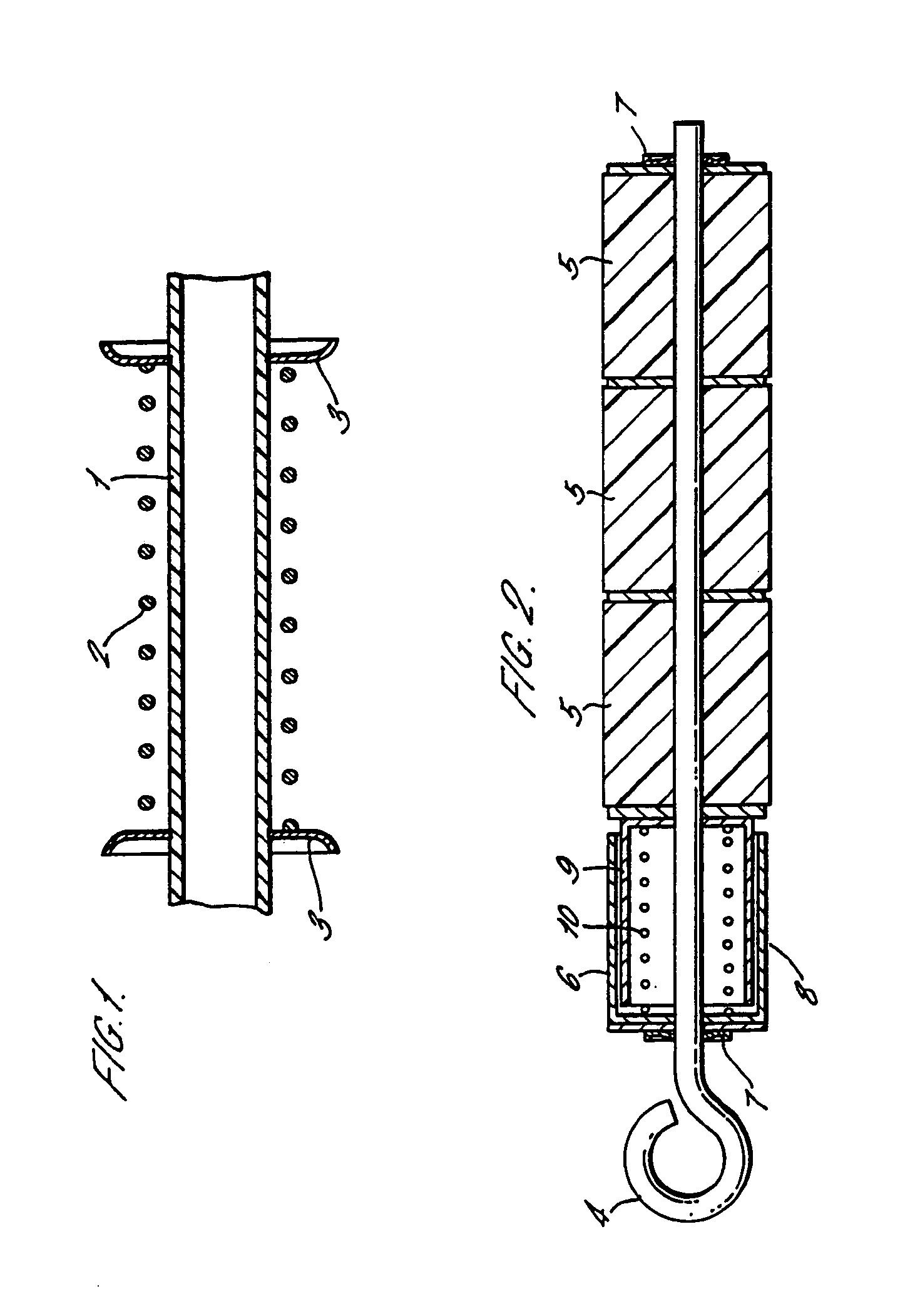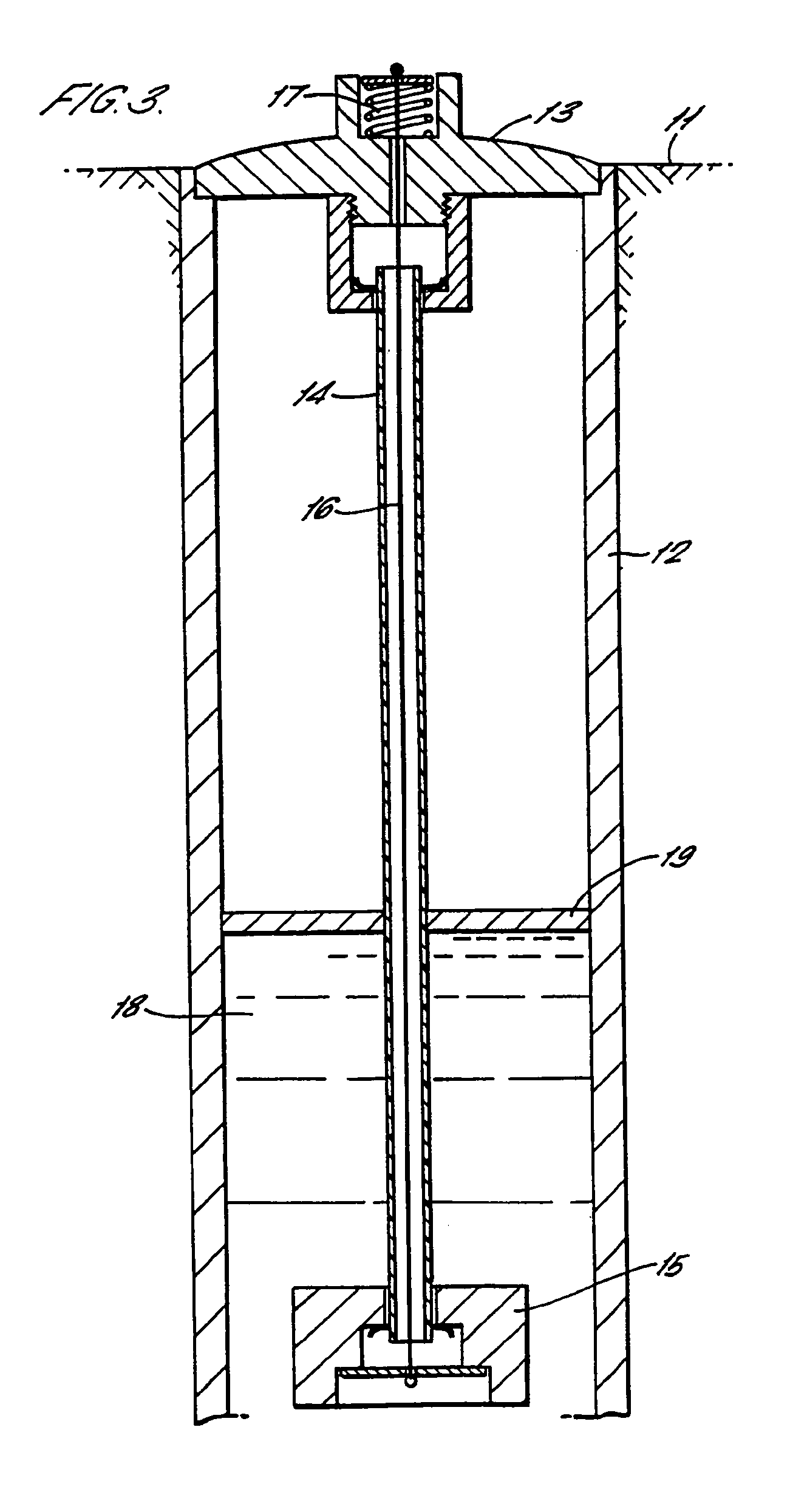Device for detecting the presence of a chemical contaminant
a technology for detecting the presence of a chemical contaminant and a device, which is applied in the direction of measuring devices, water testing, instruments, etc., can solve the problems of prohibitively high cost of many applications, physical disability or no longer function of many of these devices, and achieve the effect of low cos
- Summary
- Abstract
- Description
- Claims
- Application Information
AI Technical Summary
Benefits of technology
Problems solved by technology
Method used
Image
Examples
Embodiment Construction
[0031]The device shown in FIG. 1 comprises a tubular member 1 of high-density polystyrene. Attached to the tubular member 1 is a spring 2 which is held in compression by a pair of starlock washers 3 which anchor it to the tubular member 1. In the presence of a chemical contaminant, in this case any petroleum product, the tubular member 1 will fail and the spring 2 extends. The extension of the spring can be used to trigger a mechanical signal or alarm, or can close valves. A cable, such as a bowden cable, may extend through the tubular element and be fixed to one end of the starlock washers. On failure of the tubular member, the cable will be pulled through the tubular element allowing operation of a valve. The failure made may be shearing, stretching or bending of the tubular member, but is more likely to be slippage of a starlock washer when the surface of the tubular member has been degraded by the contaminant.
[0032]A second example is shown in FIG. 2. In this case, the device is...
PUM
 Login to View More
Login to View More Abstract
Description
Claims
Application Information
 Login to View More
Login to View More - R&D
- Intellectual Property
- Life Sciences
- Materials
- Tech Scout
- Unparalleled Data Quality
- Higher Quality Content
- 60% Fewer Hallucinations
Browse by: Latest US Patents, China's latest patents, Technical Efficacy Thesaurus, Application Domain, Technology Topic, Popular Technical Reports.
© 2025 PatSnap. All rights reserved.Legal|Privacy policy|Modern Slavery Act Transparency Statement|Sitemap|About US| Contact US: help@patsnap.com



